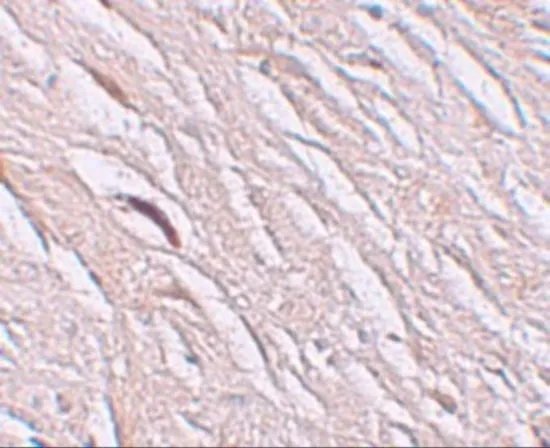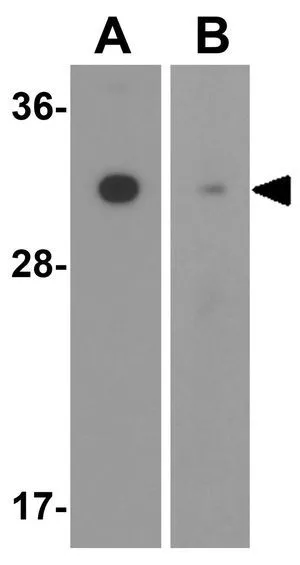
IHC-P analysis of human brain tissue using GTX85134 SLC39A2 antibody. Working concentration : 2.5 microg/ml
SLC39A2 antibody
GTX85134
ApplicationsWestern Blot, ELISA, ImmunoHistoChemistry, ImmunoHistoChemistry Paraffin
Product group Antibodies
ReactivityHuman, Mouse, Rat
TargetSLC39A2
Overview
- SupplierGeneTex
- Product NameSLC39A2 antibody
- Delivery Days Customer9
- Application Supplier NoteWB: 1 microg/mL. IHC-P: 2.5 microg/mL. *Optimal dilutions/concentrations should be determined by the researcher.Not tested in other applications.
- ApplicationsWestern Blot, ELISA, ImmunoHistoChemistry, ImmunoHistoChemistry Paraffin
- CertificationResearch Use Only
- ClonalityPolyclonal
- Concentration1 mg/ml
- ConjugateUnconjugated
- Gene ID29986
- Target nameSLC39A2
- Target descriptionsolute carrier family 39 member 2
- Target synonyms6A1; ETI-1; solute carrier family 39 (zinc transporter), member 2; zinc transporter ZIP2; zinc uptake transporter 2; ZIP2; ZIP-2; Zrt- and Irt-like protein 2
- HostRabbit
- IsotypeIgG
- Protein IDQ9NP94
- Protein NameZinc transporter ZIP2
- Scientific DescriptionThe zinc transporter ZIP2, also known as SLC39A2, is a member of a family of divalent ion transporters. Zinc is an essential ion for cells and plays significant roles in the growth, development, and differentiation. Similar to knock-outs of ZIP1 and ZIP3, ZIP2- mice have no phenotypic differences compared to wild-type mice. Only when ZIP1, ZIP2, and ZIP3 genes are all eliminated and these mutant mice are fed a zinc-deficient diet do abnormalities such as reduced embryonic-membrane bound alkaline phosphatase activity and abnormal development occur, indicating that the ZIP1-3 proteins play an important, noncompensatory role when zinc is deficient. More recent studies have shown that ZIP2 and ZIP3 are down regulated in human prostate adenocarcinomatous glands, and may be important in the retention of zinc in the cellular compartment.
- ReactivityHuman, Mouse, Rat
- Storage Instruction-20°C or -80°C,2°C to 8°C
- UNSPSC12352203


